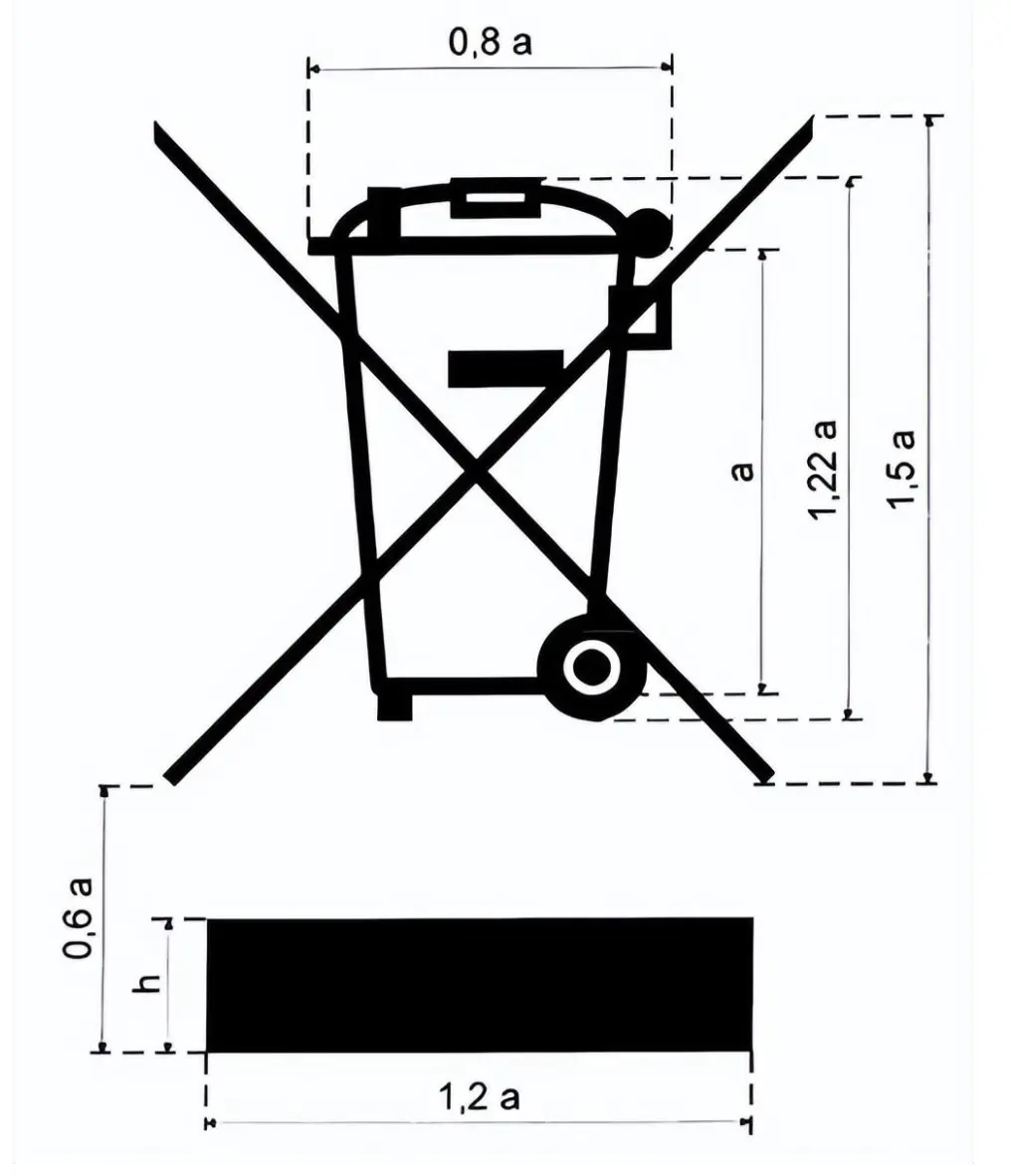
What is the WEEE Label?
According to the European Union’s Extended Producer Responsibility (EPR) policy, all electronic products sold in Germany must comply with the requirements of the German Waste Electrical and Electronic Equipment Directive (WEEE). Starting from JULy 1, 2023, Amazon will cease the sale of products in Germany that do not meet weee compliance requirements. If you list a product under WEEE jurisdiction in Germany after this date, the new product will be deactivated within 24 hours unless you provide a valid weee registration number. Once verified, the product can be relisted for sale.

What is the weee label?
Full Name in English: Waste Electrical and Electronic Equipment Directive (2002/96/EC)
Full Name in Chinese: 报废电子电气设备指令
Since August 13, 2005, producers of electronic and electrical equipment circulating in the EU market have been legally responsible for covering the cost of recycling discarded products. Additionally, EU member states are requiRED to establish electronic and electrical product recycling programs and relevant facilities to enable end users to conveniently and freely dispose of waste equipment.
Producer Responsibilities:
- Design environmentally friendly products that comply with RoHS Directive requirements.
- Register products with EU member states.
Product Labeling Requirements:
- Include the producer’s name, production date, and relevant markings.
- Affix the recycling “WEEE” symbol.
Labeling Requirements
The label must include:
- A crossed-out wheeled bin.
- A thick black line underneath the bin, distinguishing it from other recycling symbols.
The black solid line must accompany the bin and crossed-out markings without any additional symbols, text, or messages. The height (h) must be greater than 0.3a or 1mm.
Scope of Control
The WEEE directive applies to equipment with a working voltage below 1000V AC or 1500V DC, including:
1. Large household appliances
2. Small household appliances
3. Information technology and communication equipment
4. Consumer equipment
5. Lighting equipment
6. Electrical and electronic tools
7. Toys, leisure, and sports equipment
8. Medical devices (8a: standard medical devices, 8b: in-vitro diagnostic devices)
9. Monitoring and control devices (9a: standard devices, 9b: industrial devices)
10. Automatic dispensers
11. Other electronic and electrical products not covered by the above categories
The WEEE directive addresses environmental pollution at the end-of-life (EOL) stage, while the RoHS directive focuses on design-stage restrictions to prevent harmful environmental and health impacts caused by certain substances.
What is WEEE 3R?
3R refers to:
1. Recovery
2. Re-use
3. Recycling
Recycling includes reuse, material recovery, and energy recovery.
WEEE Registration and Declaration Process
Required Materials for WEEE Registration:
- Application information form
- Product information and links
- Scanned business license
Compliance Declaration Notes:
1. Accurate Form Submission: Include company details, product types, and quantities sold.
2. Complete Documentation: Provide a German WEEE registration certificate, invoices, logistics documents, etc.
3. Timely Updates: Update information to reflect changes in sales to ensure government authorities have the latest data.
4. Legal Compliance: Submit truthful information to avoid lawsuits or fines.
Additional Notes
- German WEEE registration is valid for a calendar year and requires annual fees.
- Post-registration includes pre-declarations and annual reports. Renewal fees must be paid on time to avoid delisting related ASINs.
- EPR registration, declaration, and recycling have certain complexities, so selecting a professional service provider is recommended.
Email:hello@jjrlab.com
Write your message here and send it to us
 What Are the Testing Items of California Propositi
What Are the Testing Items of California Propositi
 E-Cigarette EU TPD Testing
E-Cigarette EU TPD Testing
 Testing Certification for E-cigarettes Exported to
Testing Certification for E-cigarettes Exported to
 What is Amazon US CPC Certification?
What is Amazon US CPC Certification?
 UK Toy Safety Regulation Standard EN 71-13
UK Toy Safety Regulation Standard EN 71-13
 What is EU UFI Registration?
What is EU UFI Registration?
 EU UFI Registration for E-cigarette E-liquid
EU UFI Registration for E-cigarette E-liquid
 How to get the MSDS Report for Electronic Cigarett
How to get the MSDS Report for Electronic Cigarett
Leave us a message
24-hour online customer service at any time to respond, so that you worry!




